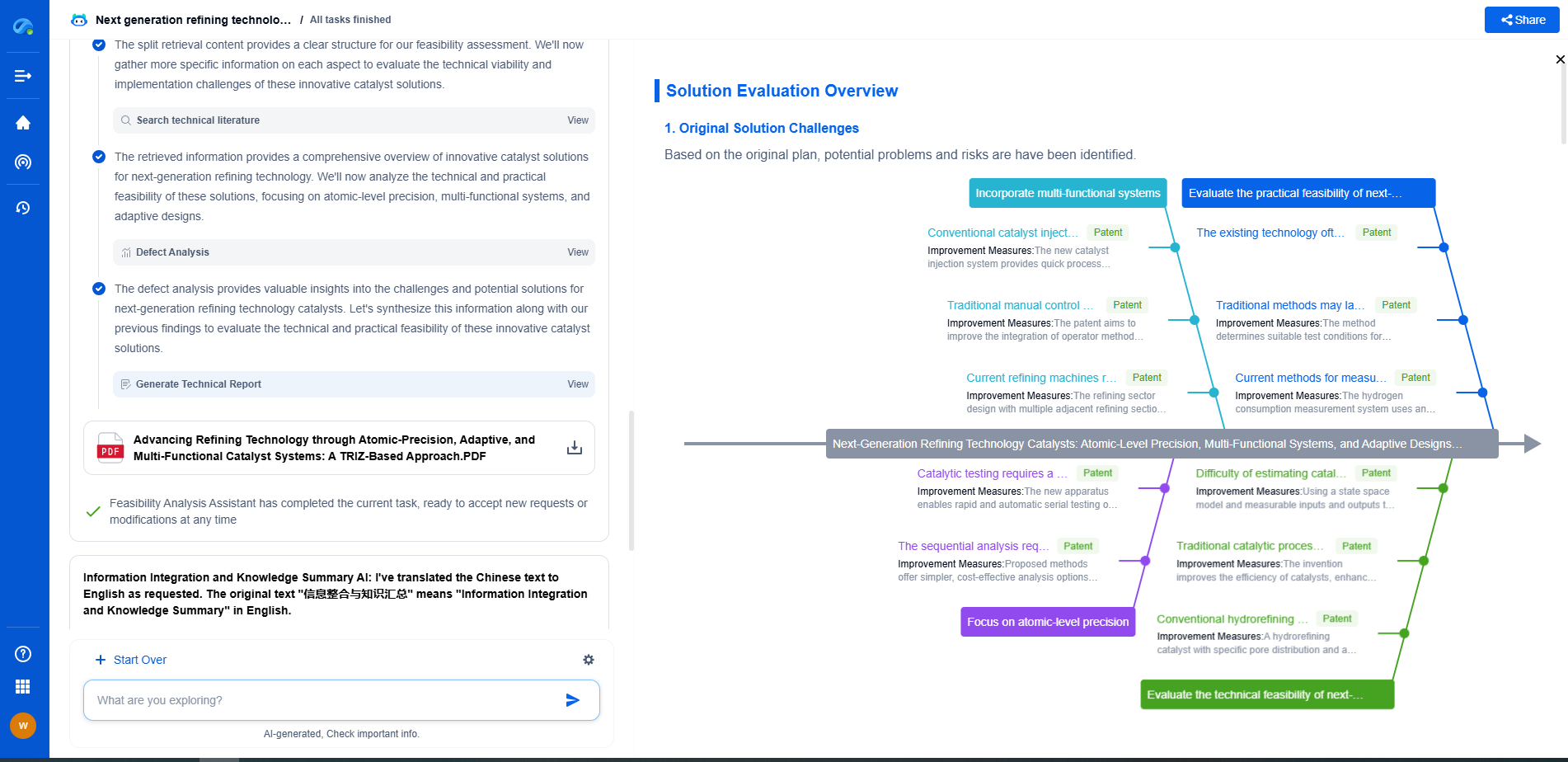Silicon vs. Polyurethane Suction Cups: Which is Best for Your Robot?
JUN 26, 2025 |
Suction cups play a vital role in the field of robotics, particularly in applications involving pick-and-place tasks, automation, and material handling. The choice between silicone and polyurethane suction cups can significantly impact the efficiency and effectiveness of a robotic system. Both materials have unique properties that make them suitable for different conditions and tasks. In this blog, we will delve into the characteristics, advantages, and potential downsides of silicone and polyurethane suction cups to help you make an informed decision.
**The Characteristics of Silicone Suction Cups**
Silicone suction cups are renowned for their flexibility and high-temperature resistance. These characteristics make silicone an ideal choice for applications where the suction cup may be exposed to varying temperatures or need to conform to irregular surfaces. Silicone suction cups are often used in the food and medical industries due to their non-reactive and non-toxic nature, complying with FDA standards.
One of the most significant benefits of silicone is its durability in high-temperature environments. This property ensures that the suction cup maintains its shape and functionality, even when exposed to heat. Additionally, the flexibility of silicone means that it can create a strong seal on surfaces that are not perfectly smooth or flat, providing reliable suction in challenging applications.
**Exploring Polyurethane Suction Cups**
Polyurethane suction cups are known for their superior abrasion resistance and excellent load-bearing capabilities. This makes them particularly well-suited for heavy-duty applications and environments where the suction cup might frequently come into contact with rough or abrasive surfaces. Polyurethane's robustness also translates into longer operational life and reduced maintenance needs.
Another advantage of polyurethane is its resistance to oils and chemicals. In industrial settings where exposure to such substances is common, polyurethane suction cups maintain their integrity and performance. This characteristic broadens the scope of application for polyurethane suction cups, making them a versatile choice for a variety of industries.
**Comparative Analysis: Silicone vs. Polyurethane**
When comparing silicone and polyurethane suction cups, it's crucial to consider the specific requirements of your robotic application. If your system operates in a high-temperature environment or requires handling delicate materials, silicone suction cups may be the better option. Their flexibility and temperature resistance ensure reliable performance under these conditions.
Conversely, if your application involves heavy loads or abrasive materials, polyurethane suction cups might be more suitable. Their strength and resistance to wear and tear make them an excellent choice for demanding industrial tasks.
**Factors Influencing Your Choice**
Several factors should guide your decision between silicone and polyurethane suction cups:
1. **Environmental Conditions**: Evaluate the temperature range, presence of chemicals, and surface roughness in your operating environment.
2. **Application Requirements**: Consider the weight and nature of the objects being handled, as well as the frequency of use.
3. **Compliance and Safety**: For applications involving food or medical products, silicone's compliance with regulatory standards might be a critical consideration.
4. **Cost and Longevity**: Balance the initial cost and expected durability of the suction cups in your decision-making process, taking into account maintenance and replacement costs.
**Conclusion**
Choosing the right suction cup material is pivotal for optimizing the performance of your robotic system. Silicone suction cups shine in environments with high temperatures and delicate applications, while polyurethane suction cups excel in demanding conditions with heavy loads and abrasive surfaces. By carefully analyzing your specific needs and operating conditions, you can select the suction cup material that will provide the best results for your robotic applications.
Ready to Redefine Your Robotics R&D Workflow?
Whether you're designing next-generation robotic arms, optimizing manipulator kinematics, or mining patent data for innovation insights, Patsnap Eureka, our cutting-edge AI assistant, is built for R&D and IP professionals in high-tech industries, is built to accelerate every step of your journey.
No more getting buried in thousands of documents or wasting time on repetitive technical analysis. Our AI Agent helps R&D and IP teams in high-tech enterprises save hundreds of hours, reduce risk of oversight, and move from concept to prototype faster than ever before.
👉 Experience how AI can revolutionize your robotics innovation cycle. Explore Patsnap Eureka today and see the difference.
- R&D
- Intellectual Property
- Life Sciences
- Materials
- Tech Scout
- Unparalleled Data Quality
- Higher Quality Content
- 60% Fewer Hallucinations
Browse by: Latest US Patents, China's latest patents, Technical Efficacy Thesaurus, Application Domain, Technology Topic, Popular Technical Reports.
© 2025 PatSnap. All rights reserved.Legal|Privacy policy|Modern Slavery Act Transparency Statement|Sitemap|About US| Contact US: help@patsnap.com

